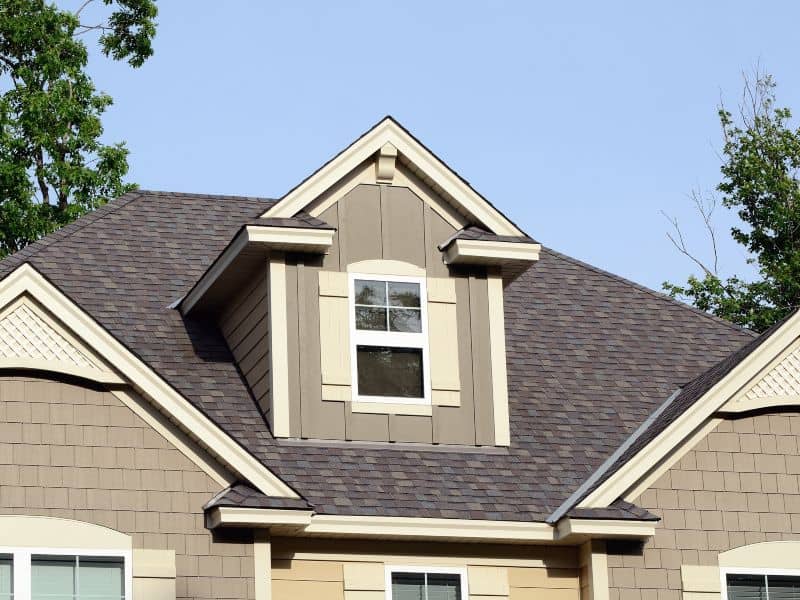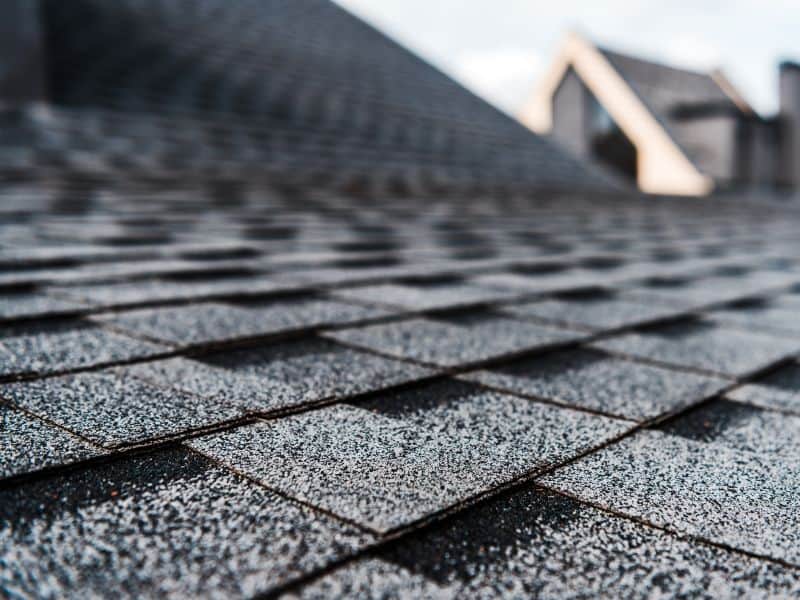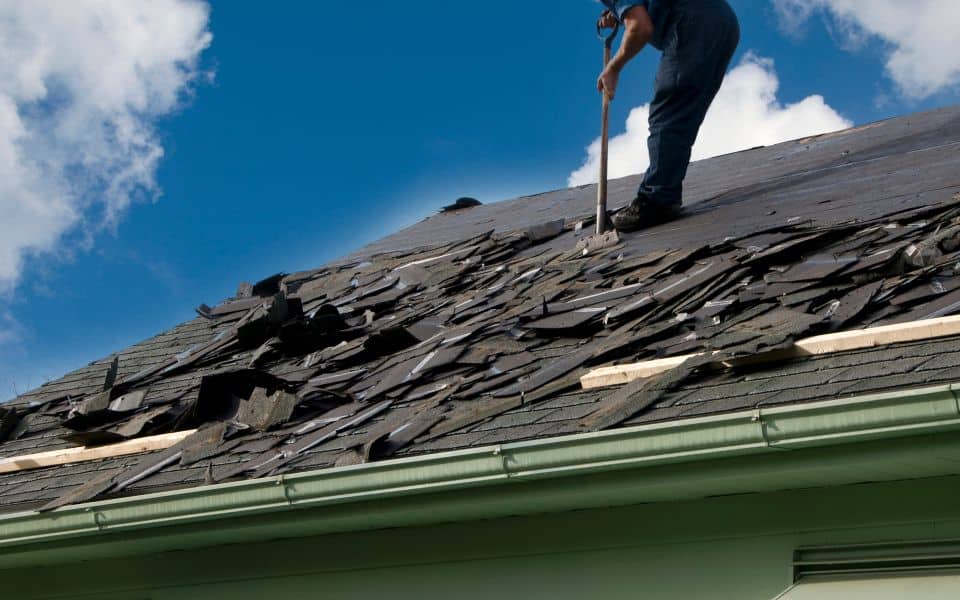As a homeowner, you know that maintaining a good roof is essential for the protection and comfort of your home. Your roof is your first line of defense against weather elements like rain, wind, and snow. It also plays a crucial role in regulating the temperature inside your home. That’s why it’s important to keep your roof in top condition.
However, despite regular maintenance, there comes a time when you need to replace your roof entirely. This is a significant investment that requires careful planning. You need to consider various factors that can affect the timing of a roof replacement. In this article, we will discuss the best time of year to replace your roof.
Factors to Consider That Can Affect the Timing of A Roof Replacement.
A. Weather conditions
The best time to replace your roof can be affected by various weather conditions. Firstly, extreme temperatures, both hot and cold, can impact the adhesion and installation of roofing materials. Very hot conditions can cause asphalt shingles to warp and melt, while very cold conditions can make shingles brittle and prone to damage during installation. Rain and snow are also important factors to consider when you plan to replace your roof. Replacing a roof during heavy rain, for example, can be dangerous, as the surface can become slippery and increase the risk of falls or accidents. Similarly, snow and ice can make the roof more difficult to access and install new materials properly. Windy conditions can also delay the process, as it can be dangerous to work on a roof during gusts above a certain level. As such, it is important to choose a time of year that has the most favorable weather conditions to replace your roof, or at least to be prepared for any potential weather disturbances.
B. Dry season
The dry season can significantly impact when it is best to replace your roof. During the dry season, roofers will have an easier time completing the job because rain and other weather elements that can slow down or halt the process will be less of a concern. A lack of precipitation also means that the roof will be dry and clean, making it easier to work on and giving the new materials better adhesion. Additionally, the dry weather can mean that materials for the new roof will be readily available and can be delivered without issue. One downside to scheduling a time to replace your roof during the dry season is the increased demand for roofing contractors. Homeowners should plan their projects well in advance to ensure they get the right roofing company for their needs. All in all, the dry season can be a good time to replace your roof because the lack of rain and other weather elements can make the process much smoother.
C. Wet season
The wet season is not the best time to replace your roof and can have a significant impact on the timing of a roof replacement. Heavy rainfall during this time can make it difficult for roofing contractors to complete the job efficiently and effectively. Wet conditions can also affect the quality of the work and lead to moisture-related problems in the future. Moreover, strong winds and storms that often accompany the wet season can create safety hazards for workers and equipment. For these reasons, it is best to avoid scheduling a roof replacement during the wet season if possible. However, if it cannot be avoided, it is important to work with a reputable and experienced roofing contractor who knows how to handle adverse weather conditions and has the necessary equipment and safety protocols in place. Overall, careful planning and communication with the roofing contractor are essential to ensure a successful and safe roof replacement, regardless of the season.

The Availability of Roofing Contractors Is Another Factor to Consider.
A. Roofing contractors are in high demand during certain times of the year.
These busy periods are typically seen in the spring and summer months as homeowners prepare for the rainy season or hurricane season. Many people opt for preventive maintenance during these months, taking the initiative to have their homes inspected and fixed before any potential damage occurs. Additionally, storm damage can cause a surge in business for roofing contractors. High winds, hail, and rain can cause significant destruction to roofs, leading to much-needed repairs or replacements. This is why it’s important for roofing contractors to be prepared for busy periods and to have a flexible schedule, as emergencies may arise at any time. By providing quality work and exceptional customer service, roofing contractors can not just meet the demands of their clients, but can also stand out from the competition and establish loyal and returning customers. Our roofing specialists at Oldline Roofing and Solar, in the Baltimore area will come and explain what’s the best time to replace your roof.
B. Local regulations
When it comes to replace your roof, local regulations can vary depending on the area you live in. It is important to check with your local government to ensure that you are following the necessary rules and regulations. In some areas, permits may be required before any work can be started. Additionally, there may be certain materials or building codes that need to be adhered to in order to ensure the roof is safe and up to standards. It is also important to consider any zoning regulations that may impact the replacement of a roof. For example, In historic districts, there may be regulations that require specific materials or colors to maintain the historic aesthetic of the neighborhood. By familiarizing yourself with the local regulations, you can ensure that your roof replacement project runs smoothly and is in compliance with all codes and requirements.
C. Building codes
Building codes provide guidelines for the installation of a new roof or the replacement of an old one. Different codes apply to residential and commercial structures and vary by state, city, and municipality. Some of the aspects that building codes regulate include the types of materials that can be used, Before beginning the process to replace your roof, it’s essential to research and ensure that the roofing contractor is well-informed on the specific code requirements for that area. Non-compliance with building codes can lead to penalties and, in the worst-case scenario, the roof can be deemed unsafe or illegal. It’s also important to consider energy efficiency requirements when choosing roofing materials, as some building codes might require the use of eco-friendly materials to reduce the impact on the environment and encourage energy savings. Properly following building codes helps ensure that the new or replacement roof is installed safely and efficiently, providing the needed functionality and durability for the respective structure.
Best Time of Year to Replace A Roof
A. Late spring or early fall
Late spring or early fall is considered to be the best time to replace your roof. One reason for this is that the weather tends to be mild and consistent during these times, which makes it easier for contractors to work and reduces the risk of delays due to bad weather. In late spring, the weather is starting to warm up, but it’s not yet too hot for roofing work. Early fall has cool temperatures, and there’s less chance of rain or storms, which can prolong the installation process. Additionally, by scheduling your roof replacement during this time, you’ll be better prepared for the harsher weather conditions of winter. Replacing your roof during the summer or winter is not ideal, mainly because extreme temperatures can impact the installation process and the sealant’s adhesion. Moreover, peak seasons may lead to a delay in scheduling and might even cost you more. Overall, late spring and early fall are the best time to replace your roof and are favored by roofing professionals and homeowners for their moderate and predictable weather conditions, allowing for optimal installation and longevity of the new roof. There are several important signs that you need to replace your roof.
B. Roofing contractors
The best time of year for roofing contractors depends on where you live. In general, the late spring and early fall months are the most popular times for roofing work. The warmer weather makes it easier for contractors to work on your roof without weather-related delays. Additionally, the longer days and milder temperatures make it more comfortable for workers to spend extended periods of time working outside. However, late spring and fall is also the busiest time for contractors, so if you want your roofing work done quickly, it is best to schedule it well in advance. However, winter is generally the worst time for roofing work, as the colder temperatures and inclement weather can make it difficult or impossible to work safely on roofs.
C. Statistics and data support this claim.
The study found that homeowners who replaced their roofs in the fall saved an average of 10% on the project’s cost compared to those who did it during the summer. The best time of year for roofing contractors really depends on the location. For warmer regions, like the Southern United States, the best time of year is typically the winter months when temperatures are cooler. For colder regions, like the Northeastern United States, the best time is typically the warmer months when the weather is more predictable. The summer months, in general, tend to be the busiest for roofing contractors due to the favorable weather conditions across the country. However, this also means that prices may be higher during this time. Additionally, it’s important to keep an eye on the weather forecast when scheduling roofing work as rain and storms can delay or even halt progress. Ultimately, the best time for roofing work is when it’s necessary and when the weather permits, so it’s important to communicate with your contractor to find the optimal time for your project.

Benefits of Replacing Your Roof at the Best Time of Year
A. You can expect better quality work
The best time to have your roof replaced is during the warmer months of the year. This is because weather conditions are more favorable during this period, providing roofers with the perfect environment to carry out their work. They are not faced with some of the challenges they would encounter if they were to work during harsh weather conditions, such as snow and ice. Additionally, the roofing materials used for replacement work perform much better in warm temperatures than they do in cold weather. This makes it easier for roofers to carry out their work effectively and efficiently, which can help to ensure that the work is completed to a higher standard. So, if you are considering having work done on your roof, then you should try to schedule it during the warmer months of the year. Doing so will enable you to get better quality work and will ensure that your roof is in top condition to protect your home during the colder months. Contact our roofing specialists at Old Line Roofing and Solar for a free quote when it is time to replace your roof. We have been installing roofing across the Northeast for over 30 years.
B. Quicker completion time.
Typically, the best times to have roofing work done are during the late spring and autumn months. This is because the sunny and dry weather conditions allow for the roofing materials to properly adhere and seal together. Also, during these seasons, there is less of a chance of rain or snow interfering with the roofing process, meaning there will be fewer interruptions and delays. By choosing to have your roof worked on during the prime season, you can ensure that the project is completed quickly and efficiently, without having to worry about weather-related setbacks. Ultimately, this means a faster turnaround time and less stress and hassle for property owners.
C. Contractors are more efficient
Contractors are more efficient during the late spring and fall months for roof replacement projects for several reasons. Firstly, the weather conditions during these seasons are typically milder and more predictable than during the summer or winter months. This makes it easier for contractors to plan and execute their work without being hindered by extreme temperatures or weather conditions. Secondly, demand for roofing services tends to be lower during the shoulder seasons, allowing contractors to focus on a smaller number of projects and complete them more quickly. Additionally, since the days are longer during the spring and fall, contractors have more daylight to work with and can get more done in a shorter amount of time. Finally, some roofing products and materials are easier to work with in moderate temperatures, and are more likely to perform better and last longer if installed during these seasons. Overall, scheduling a roof replacement project during the spring or fall can help ensure that it is completed efficiently and effectively.
Conclusion
As you can see, the timing of a roof replacement is critical. By considering the factors we discussed, you can determine the best time of year to replace your roof. The late spring and early fall are the best seasons for roof replacement, based on statistics and data. Replacing your roof during the off-peak season has several benefits, including cost savings, better quality work, and a quicker completion time. We encourage you to take action and schedule a roof replacement project during the best time of year. It’s an investment that will pay off in the long run.
Contact Us!
Our roof replacement services are some of the best in the business. We have a team of experienced professionals who are experts at repairing roofs. We use only the highest quality materials and our workmanship is second to none. Our professional roofing contractors can come and give you a free estimate when it’s time to replace your roof. Contact us today for a free quote.

